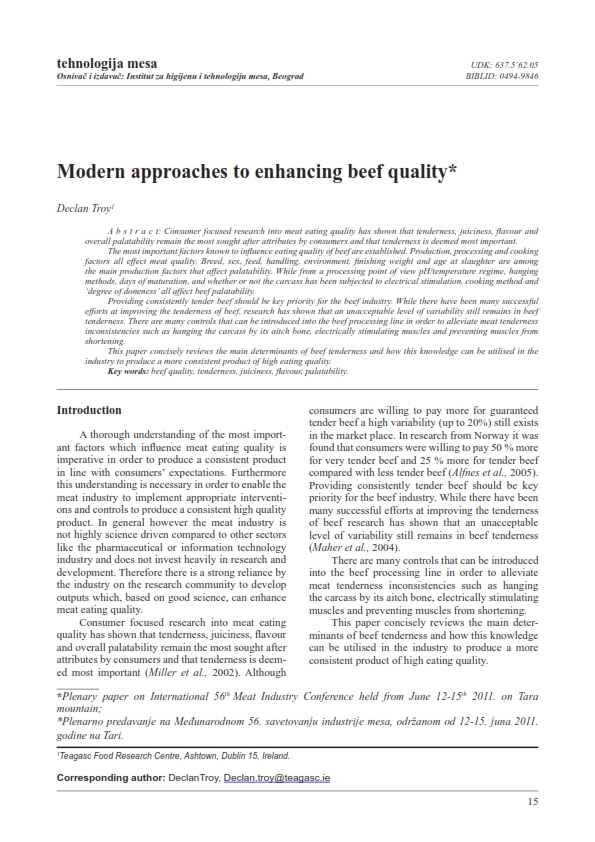Modern approaches to enhancing beef quality
Abstract
Consumer focused research into meat eating quality has shown that tenderness, juiciness, flavour and overall palatability remain the most sought after attributes by consumers and that tenderness is deemed most important. The most important factors known to influence eating quality of beef are established. Production, processing and cooking factors all effect meat quality. Breed, sex, feed, handling, environment, finishing weight and age at slaughter are among the main production factors that affect palatability. While from a processing point of view pH/temperature regime, hanging methods, days of maturation, and whether or not the carcass has been subjected to electrical stimulation, cooking method and ‘degree of doneness’ all affect beef palatability. Providing consistently tender beef should be key priority for the beef industry. While there have been many successful efforts at improving the tenderness of beef, research has shown that an unacceptable level of variability still remains in beef tenderness. There are many controls that can be introduced into the beef processing line in order to alleviate meat tenderness inconsistencies such as hanging the carcass by its aitch bone, electrically stimulating muscles and preventing muscles from shortening. This paper concisely reviews the main determinants of beef tenderness and how this knowledge can be utilised in the industry to produce a more consistent product of high eating quality.





